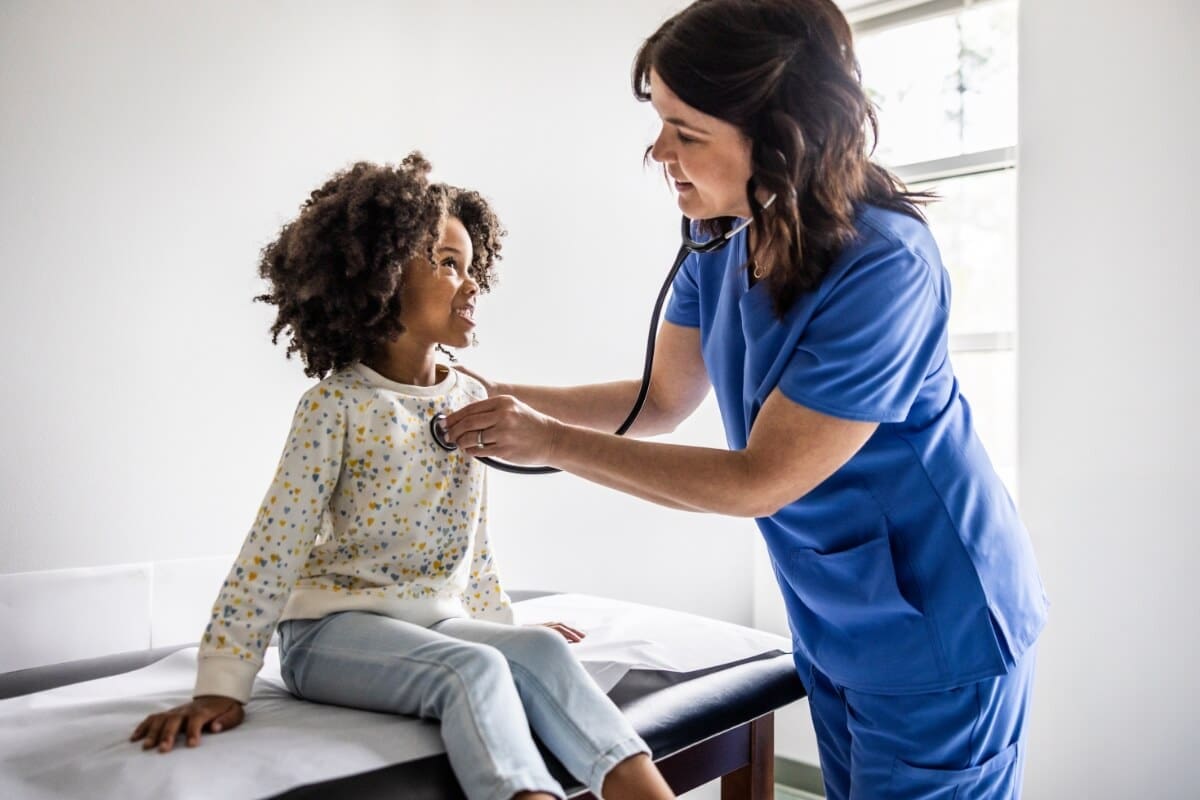
Doctors’ Notes
Real stories by real family physicians
From diagnosis through ongoing treatment, I help my patients who have HIV live longer, healthier lives and avoid passing HIV to others.
One of the most challenging parts of being a family doctor is giving a patient a life-changing diagnosis. It’s a delicate tightrope to walk and requires both honesty and grace. Every patient reacts differently. Many find that their mind wanders 30 seconds into hearing difficult news. They start thinking about all of their worst fears. In these moments, they may not be able to hear or understand anything else I’m telling them. I focus on showing empathy by giving my patients the time they need to process the diagnosis. Sometimes, the best thing I can do is just sit with a patient in solemn silence for a while. Everything else slows to a halt. The urgency of the day fades into the background for both me and my patient.
Several years ago, a patient at my clinic was screened for HIV for the first time. Anna (not her real name) was a 30-year-old wife and mother whose family had recently immigrated to the United States to find a better life. Unfortunately, we had to tell Anna that her blood test had come back positive for HIV. All at once, overwhelming sadness filled the room.
Anna mentally replayed the last few years of her life, trying to identify when, where, and how she had been infected with HIV. I sat quietly with her as she wept. “How can I ever tell my family?” she asked over and over again. She had so many questions racing through her mind that she didn’t know where to start. In her country of origin, people infected with HIV often died young because access to the most modern life-saving medicines was limited.
After Anna’s initial shock wore off, she told me she was very worried about what this diagnosis would mean for her family. Were her husband and her young child infected with HIV? Would she be able to have more children?
I told Anna that it’s normal to feel sadness, anxiety, and fear when you find out you have tested positive for HIV. I also reassured her that there are many medicines available to treat HIV. These medicines (called antiretroviral therapy or ART) have improved dramatically over the last 10 years. The newest medicines have few side effects. With treatment, the survival rate for HIV in the United States is very good. In fact, a person who is diagnosed with HIV early and starts antiretroviral therapy can have a life span that is about the same as a similar person who does not have HIV.
Finding hope
Later that week, Anna breathed a heavy sigh of relief when her husband and child both tested negative for HIV. Two weeks later, she started antiretroviral therapy. The goal of this therapy is to make the amount of HIV in her blood (called the viral load) so low that it can’t be measured by blood tests. This is called an undetectable viral load. According to the Centers for Disease Control and Prevention (CDC), people who take HIV medicine as prescribed and maintain an undetectable viral load essentially have no risk of passing the virus to their HIV-negative sexual partners. Within 3 months of starting antiretroviral therapy, Anna had an undetectable viral load.
I also started Anna’s husband on pre-exposure prophylaxis (PreP) to reduce his risk of being infected with HIV. PreP is a prescription pill taken once a day. The U.S. Preventive Services Task Force (USPSTF) and the American Academy of Family Physicians (AAFP) recommend that doctors should offer it to people who don’t have HIV and are at higher risk for getting it.
In the year following her diagnosis, Anna got pregnant. Children born to mothers who have HIV can become infected during pregnancy, childbirth, and breastfeeding. However, doctors can prevent this by giving medicine to the pregnant mother and to her newborn. I’m happy to report that Anna delivered a baby girl who is HIV negative.
Since the dark day when Anna got her HIV diagnosis, I have worked with her to manage this chronic condition effectively. One of the many joys of being a family doctor is that I get to care for Anna’s whole family. I monitor her ongoing treatment, see her kids for well-child visits, and help her husband avoid getting HIV. She and her husband are even thinking about adding one more child to their family in the near future. Through joyous times and difficult times, I look forward to being there to help keep Anna and her family healthy in the years to come.
Quick Tip
The CDC estimates that about 15% of Americans who have HIV don’t know they are infected. It’s important to know your HIV status. Talk to your family doctor about how to get confidential testing for HIV. Your doctor can give you the support you need before and after the blood test and explain what your test results mean. Even though there is no cure for HIV, early diagnosis and treatment help many people who have HIV live longer, healthier lives.
Learn more about risk factors for HIV, how it’s diagnosed, and how to prevent it.
![]()
Copyright © American Academy of Family Physicians
This information provides a general overview and may not apply to everyone. Talk to your family doctor to find out if this information applies to you and to get more information on this subject.












